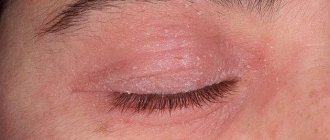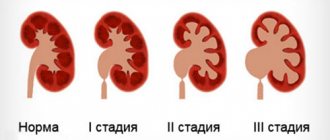More about the operation
At the GMS Hospital Urology Center, such operations are performed by experienced urological surgeons with many years of practice.
The choice of surgical intervention is determined by the structural and functional state of the ureter, the extent and degree of narrowing. There are various options for operations:
- endoscopic - the intervention is performed transurethrally or through a micropuncture in the kidney area (nephrostomy puncture) using special instruments equipped with a miniature video camera, an enlarged image from which is transmitted to a high-resolution display. Dilatation or dissection of the ureter is carried out from the inside with a laser or cold knife, with minimal tissue damage;
- laparoscopic - they are carried out through several mini-punctures in the abdominal cavity, the ureter is isolated, its changed part is excised, a stent is installed in the lumen for the healing period and, then, the ends of the ureter are hermetically sutured;
- open reconstructive operations are performed in case of a complicated course of the disease, extensive strictures, when it is necessary to remove a damaged section of the ureter and replace it with an autograft formed from a flap of the bladder or intestinal wall tissue.
Regardless of the type of intervention, its main goal is to eliminate stenosis and restore the free flow of urine from the collecting system of the kidneys.
How is endoscopy performed for PMR in a child?
Endoscopic surgery helps to cope with reflux in 97% of cases, especially if the safe and effective drug “Dam Plus” is chosen as an implant. A bulk-forming synthetic biopolymer in the form of a thick gel is implanted into the ureteral mucosa, which narrows the lumen and prevents the outflow of urine in the opposite direction.
A cystoscope is inserted into the urinary canal, through which the doctor gains access to the mouth of the ureter. Using a thin needle, a gel is directed there, which forms a dense “cushion” and provides a stable anti-reflux function.
"Dam Plus" has been used in modern medicine for more than 10 years
Endoscopic correction of the ureteral orifices using the drug "Dam Plus" in numbers: get acquainted with the research results and statistics on this innovative technology:
Why surgery is needed
Strictures can be congenital or acquired. The causes of acquired stenosis are various injuries of the ureter (postoperative, after instrumental examinations), bedsores from stones, scar changes due to operations on the abdominal or pelvic organs.
Areas of narrowing can form in any department, have different lengths, can be multiple or single. Due to various reasons, in a particular area, the elastic tissue of the duct walls is replaced by fibrous-connective (scar) tissue. This leads to a significant decrease in the diameter of the ureter in the scar zone and an increase in pressure, expansion of the urinary tract above the narrowing, as a result of which kidney function suffers.
Conservative therapy for ureteral stricture is ineffective. Medicines, physiotherapy, and traditional medicine are unable to eliminate the fibrous-sclerotic processes occurring in tissues. This disease is a direct indication for surgery.
Are there any complications?
Some consequences of ureteral stenting may be so severe that they require removal of the stent. The following complications are possible:
- Since stenting is an invasive procedure, there is a risk of infection. However, he is not tall. A urinary infection requiring antibiotic treatment occurs in only one in a thousand patients;
- The kidney is an organ that has a good blood supply, so careless actions by the doctor can cause bleeding. Imaging methods (x-rays), under the control of which a stent is installed, help reduce the risk;
- Some patients experience frequent urination and bladder spasms, which lead to acute pain. Sometimes the stent gets stuck, migrates (rises into the renal pelvis or descends into the bladder), becomes overgrown with stones, ruptures, and twists into knots. In such cases, surgery may be required;
- Most patients do not feel the stent, but sometimes it causes discomfort and pain in the lower back and lower abdomen. In some cases they are so strong that the stent has to be removed. It happens that, for one reason or another, the stent does not perform its functions, and the disturbance in the outflow of urine persists;
- In rare cases, patients experience allergic reactions to medications used for pain relief or radiopaque solution. You should consult a doctor if, after the procedure, symptoms such as pain in the lower abdomen, burning and pain during urination, blood in the urine, or increased body temperature occur.
Treatment of ureteral stricture at GMS Hospital
At the GMS Hospital surgical center, modern, low-traumatic methods that have proven to be highly effective are used to treat urinary duct stenosis. Operations are carried out using high-tech endoscopic and laparoscopic equipment, and the possibilities of laser surgery are actively used. This approach provides a number of the following advantages:
- time spent in hospital is no more than 1-2 days;
- fast recovery;
- safety and bloodlessness of the intervention;
- minimal risk of complications;
- mild pain syndrome.
Our specialists care for the patient and, if necessary, doctors from other subspecialties take part in the treatment during the postoperative period. Experienced urological surgeons equally successfully perform both minimally invasive and extensive open reconstructive interventions.
A little history of endoscopic treatment
Endoscopic correction of VUR using synthetic prostheses is not a new method: it has been actively used since 1981. Over the years, a large number of uro-implants have been proposed for correction of the ureteral orifice. At first, preparations of animal origin were used - collagen, fibroblasts, plasma clot. Somewhat later, safer synthetic uro-implants appeared, for example the drug DAM+. The latter is highly biocompatible and stable, does not cause allergic reactions or inflammation.
Cost of treating ureteral stricture
The prices indicated in the price list may differ from the actual prices. Please check the current cost by calling +7 495 104 8605 (24 hours a day) or at the GMS Hospital clinic at the address: Moscow, st. Kalanchevskaya, 45.
| Name | Price |
| Balloon dilatation/cutting of ureteral stricture | RUB 107,520 |
| Laser incision/bougienage of ureteral stricture | RUB 90,244 |
| Plastic surgery of the lower third of the ureter (Boari operation) | RUB 178,563 |
| Endoscopic balloon dilatation of urinary tract strictures | 126,000 rub. |
Dear Clients! Each case is individual and the final cost of your treatment can only be found out after an in-person visit to a GMS Hospital doctor. Prices for the most popular services are indicated with a 30% discount, which is valid when paying in cash or by credit card. You can be served under a VHI policy, pay separately for each visit, sign an agreement for an annual medical program, or make a deposit and receive services at a discount. On weekends and holidays, the clinic reserves the right to charge additional payments according to the current price list. Services are provided on the basis of a concluded contract.
Plastic cards MasterCard, VISA, Maestro, MIR are accepted for payment. Contactless payment with Apple Pay, Google Pay and Android Pay cards is also available.
Bloodlessness of intervention
100% sterile
The highest level of personnel qualifications
Modern medical equipment and advanced diagnostic and treatment methods
Make an appointment We will be happy to answer any questions Coordinator Oksana
What indications to use
A diagnosed ureteral stricture is a direct indication for surgery. The following symptoms may indicate the presence of the disease:
- regular pain in the lumbar region (from the narrowing side);
- relapses of urinary tract infections – pyelonephritis;
- stone formation;
- signs of chronic renal failure (chronic kidney disease) - increased levels of creatinine, blood urea.
If any of these manifestations appear, make an appointment with a urologist.
Preparation, diagnostics
Diagnosis of ureteral stricture may include:
- physical examination by a urologist, medical history;
- a set of laboratory tests - blood and urine tests;
- Ultrasound of the kidneys and bladder;
- MSCT of the urinary system with contrast;
- retrograde ureterography;
- nephroscintigraphy;
- reteroscopy.
The doctor decides individually which studies will be necessary in a particular clinical case.
Since the operation involves anesthesia, consultation with an anesthesiologist and other specialized specialists (general practitioner, cardiologist) is required. You can undergo a preoperative examination at the GMS Hospital Urology Center within a day.
How is the operation performed?
Surgical treatment of ureteral stricture involves different types of intervention. But the essence of the procedure remains the same - restoration of duct patency and normalization of urine outflow:
- endoureteral dissection of adhesions with stent placement, bougienage and balloon dilatation of the stenotic area. The use of microsurgical instruments and optics with multiple magnification allows for targeted intervention without injuring surrounding tissues, nerves and blood vessels;
- laparoscopic resection of the affected fragment of the ureter and the application of ureteroanastomosis, that is, restoration of the integrity of the duct by stitching (ureteroureteroanastomosis, ureterocystoneoanastomosis, Bori operation, etc.). The video camera transmits a multiply enlarged image to the monitor, ensuring maximum accuracy of every movement of the surgeon. The traumatic effect is minimal;
- laparoscopic ureterolysis – excision of fibrous tissue around the ureter, leading to its compression and deformation;
- percutaneous puncture nephrostomy - performed if it was not possible to restore the outflow of urine by installing a stent or is contraindicated;
- nephroureterectomy – removal of the kidney and ureter. It is performed as a last resort if the narrowing of the duct is accompanied by the death of the kidney (with hydronephrosis or pyonephrosis).
Surgical tactics depend on clinical features, general health, the presence of complications and other factors.
To achieve maximum results, operations can be combined. Depending on the scope of the operation, it is performed under general anesthesia or spinal (epidural) anesthesia. The last stage of surgery is ureteral stenting. An endotomy stent catheter is installed for approximately 6 weeks and is removed after urine flow returns to normal. You have questions? We will be happy to answer any questions Coordinator Tatyana
Negative results
Sometimes they arise. Displacement of the tube or its protrusion sometimes occurs.
This happens much more often if an open operation is performed.
Negative consequences may include bleeding, hematomas, etc.
As medical practice shows, these consequences are extremely rare.
Troubles may appear some time after the operation. Among them:
- Violation of the tone of the pelvis;
- Malfunction of the ureter;
- Pyelonephritis;
- Urolithiasis disease;
- Necrosis of kidney tissue.
Proper care of the drainage tube greatly reduces the risk of unpleasant results.
Features of the rehabilitation period
Recovery time depends on the type and volume of intervention and general health. Urological surgeons at GMS Hospital prefer minimally invasive surgical techniques that have minimal impact on the usual lifestyle. To ensure a quick and trouble-free recovery, we recommend:
- follow the diet prescribed by the doctor;
- for 4-6 weeks, limit physical activity and do not lift heavy objects;
- be regularly observed by a urologist;
- undergo control examinations in a timely manner.
You can get more detailed information about the disease and treatment methods for ureteral stricture by making an initial consultation with a GMS Hospital urologist, leaving a request on the website or by phone.









